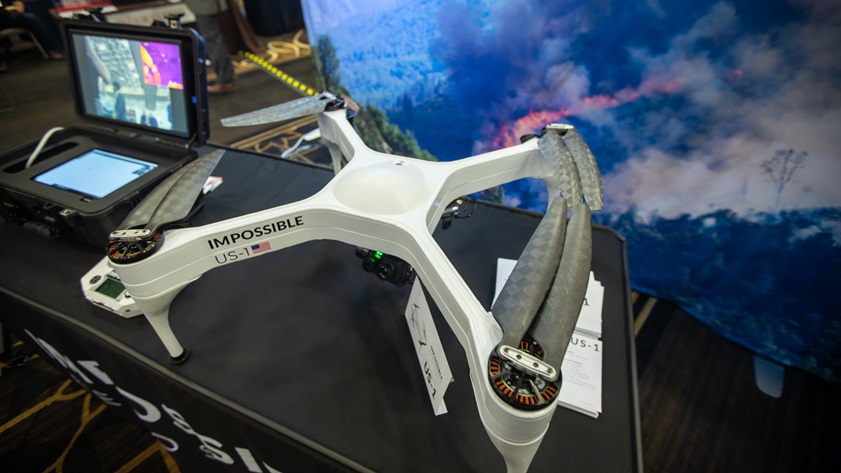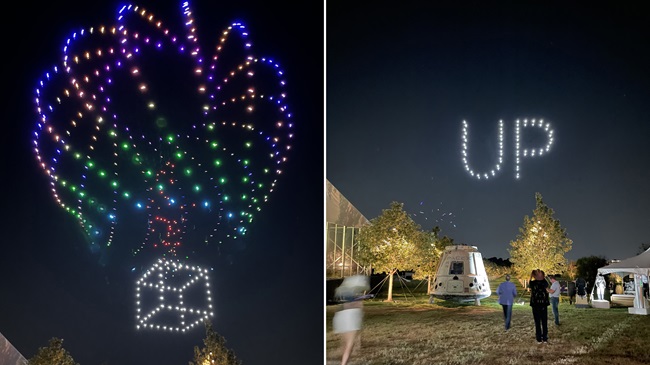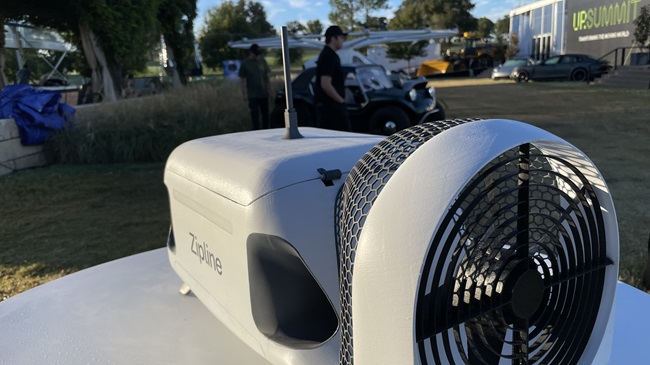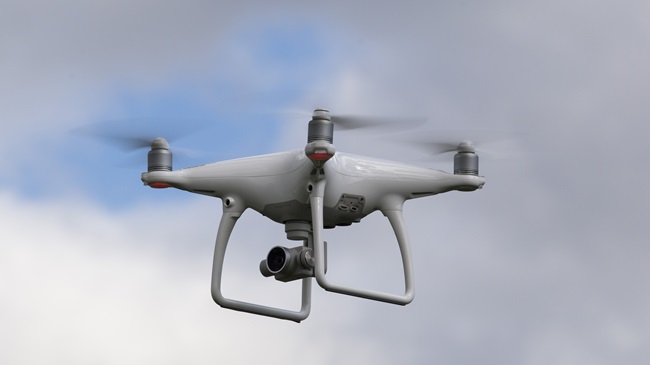'Impossible' quadcopter is all battery
Long endurance and American assembly are the key selling points touted by a former Tesla battery engineer who unveiled Impossible Aerospace and its first product, the US–1, in Las Vegas. Investors have bet $9.4 million that a singular focus on flight time will pay off, particularly in the public safety market.
The $9.4 million in Series A venture capital funding was announced Sept. 10, following a sneak peek at the drone itself at the InterDrone convention, where founder and CEO Spencer Gore and members of his team fielded questions about the US–1 quadcopter.
Gore’s team includes fellow veterans of Tesla, and the marketing push began with a press release noting two-hour flight times. Add an asterisk to that: The flight time with a payload (the US–1 will start shipping with only one payload, a FLIR Duo Pro R thermal and visible light camera system), is 78 minutes, according to technical specifications published online.
“We tell customers they can have any payload they like, as long as it’s a FLIR Duo Pro R,” Gore said.
Gore said his company manufactures the plastic shell that encloses all of those batteries, and encourages customers with a need to keep flying while charging to buy two aircraft.
The company’s online store listed a basic package, including the 26-inch-by-26-inch quadcopter, a 16-channel remote controller, a hard case, a Px4 autopilot, and little else for $7,500. A “thermal” version adds a ground control station and a high-definition video transmission link (made by Connex) and retails for $9,500, still without a payload. Add the highest-resolution FLIR Duo Pro R and a gimbal (made by another manufacturer) to hold that camera, and the price climbs to $16,000. (Customers have the option to provide their own camera and gimbal, as long as that camera is a FLIR Duo Pro R.)
The US–1 matches the weather resistance of one of its chief competitors, the DJI Matrice 200 series, which also has an IP43 rating for internal protection, meaning the aircraft is protected from intrusion by small objects (wires larger than 1 millimeter) and water spray less than 60 degrees from vertical. The prices are similar when considering the full package of aircraft, controls, and payload (sensors).
Gore said two years of work by a team of engineers have gone into designing the US–1, and he has personally taken a risk to build what he views as a better aircraft solution.
“I maxed out my credit cards and lived in an office for six months,” Gore said. “I don’t think there’s anything more fulfilling than what we’re doing here.”
He hopes the fact that the US–1 is assembled in the United States (albeit using many foreign-made components) will be another key selling point in a market sensitive to such things, particularly government agencies. He noted that data captured by the drone is all stored locally, fully under the user’s control, and the radio links are encrypted to further enhance data security.
“It seems to really be answering a customer need,” Gore said of his interactions at the show, where people outside the company were seeing the US–1 for the first time. “We try to make it as domestic as humanly possible. We think that U.S. manufacturing is important to more customers than you might think.”
The ability to fly through most of an incident response without needing to land and recharge may be the most potent selling point of this system.
“It turns out that most fires last longer than 20 minutes,” Gore said, listing fire response as the top use case for the system.





